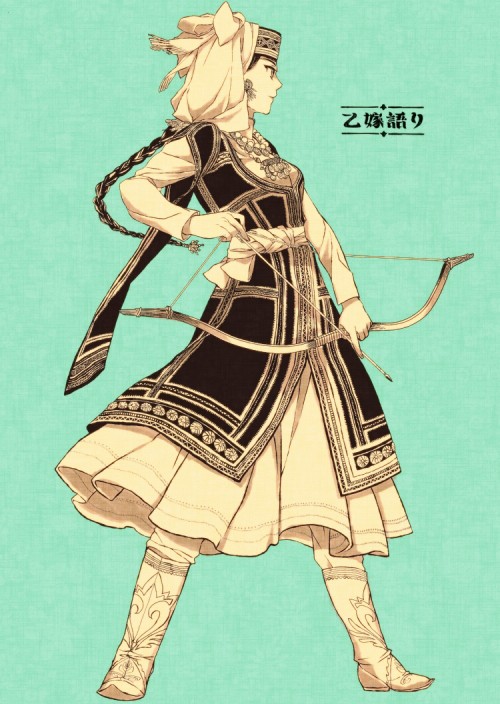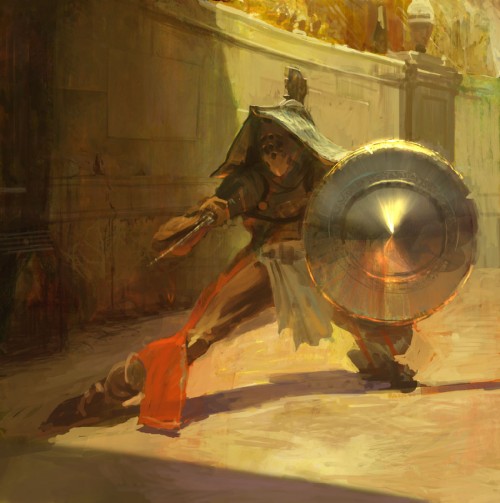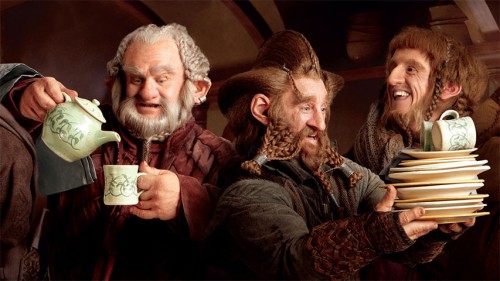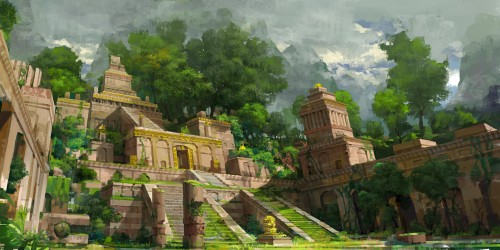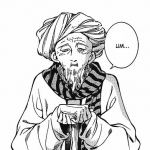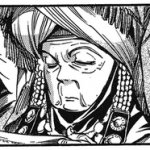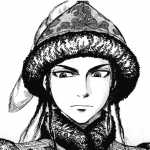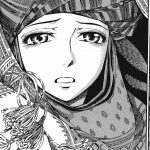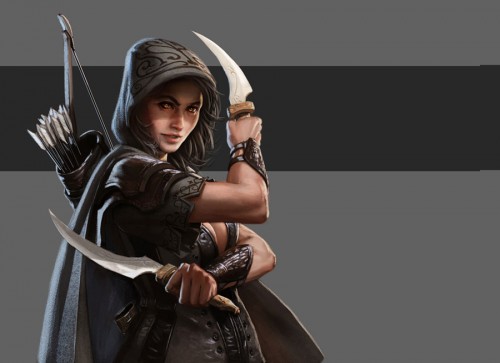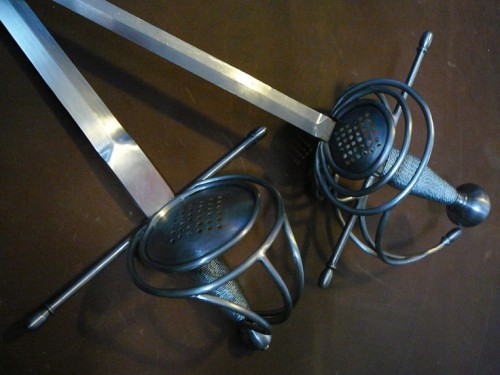In which we create a trick-shot artist that takes advantage of the Battle Master archetype’s lack of melee-only restrictions.
From a look at the D&D NEXT playtest material, one of the features I most looked forward to were the combat maneuvers. They had tinkered around with various ways of using martial dice with various classes to various effect. In the finished rules the martial dice are gone, replaced by “superiority dice” that are the purview of one Fighter archetype, the Battle Master.
The Battle Master strikes me as a nod to how Fighters and Warlords played in 4th Edition Dungeons & Dragons. They can do tricky stuff that makes their allies more effective and their enemies somewhat useless, they can take a beating, they can hit hard. An excellent addition to any team. In 4th edition the Fighter and Warlord classes were heavily invested in being right up in the thick of it, scrapping toe-to-toe with the bad guys. You could use a polearm or whip to keep a little distance, but most of their features required an up-close-and-personal approach.
Which of course makes me want to fiddle with the 5th Edition D&D Battle Master as a ranged specialist, hanging back with the squishy spellcasters and such. Let the Blade Pact Warlock get his hands dirty, the Archery Master likes to phone it in from afar.
To start things out, we select a race. Ideally we want something that is dexterous and charismatic. This is neatly filled by the Drow and the Lightfoot Halfling, but light sensitivity is a serious drag and small creatures are no good with heavy weapons like the Longbow. That leaves us with High Elf or Wood Elf to get the full +2 to Dexterity, or Half-elf or Human to get a simple +1. Let’s hold our noses and take Half-elf. From the standard heroic spread we put the 15 into Dexterity, 14 into Constitution, 10 into Strength, 12 into Wisdom, 13 into Charisma, 8 into Intelligence. We get a +2 racial bonus to Charisma and +1 to each of two others, so we end up with a statline of Str 10 Dex 16 Con 14 Int 8 Wis 12 Cha 14. We select Perception and Medicine as our racial skills.
Our Archery Master isn’t the sharpest tool in the shed academically, but is wise, charming, nimble, and hale. Let’s select the Outlander background. This gets us the Athletics and Survival skill proficiencies, which would already have been ours to take as a Fighter, but we also get the opportunity to dispense pithy proverbs and back-woods wisdom to our civilized allies. For our first level we select Fighter and take the Archer fighting style. We select Acrobatics and Insight for our class skill proficiencies. We have 12 hit points, have an AC of 15 with leather armor, and attack at a +7 for 1d8+3 damage with a Longbow or at +5 for 1d8+3 damage with a Rapier. As a bonus action we may get a second wind, recovering 1d10+1 hit points once per short rest.
We continue with the Fighter class at second level, gaining the Action Surge feature.
At 3rd level we select Battle Master as our Fighter Archetype. This confers a few benefits. We gain three maneuvers from a list, four 1d8 superiority dice, and proficiency with an artisan’s tool. As an archer, woodcarver’s tools seem appropriate. Some maneuvers provoke saving throws, the difficulty for which is 8 + Proficiency Bonus + Dexterity Bonus, or 13 for us at the moment. For the moment we’ll select the following maneuvers:
- Commander’s Strike – spend a superiority die to let an ally take an attack out of turn. This can be used without engaging the target in melee, and can be used to allow the party Rogue to gain additional Sneak Attack chances. Note that Sneak Attack is limited to once per turn, not once per round. It isn’t the Rogue’s turn any more when this is used.
- Rally – spend a superiority die to grant temporary hit points to an ally. The number of hit points granted benefits from Charisma, hence the prioritization of Charisma earlier.
- Trip Attack – spend a superiority die to force your target to make a Strength save or be knocked prone. Depending on the target, this is better than a normal shove-to-trip attempt in melee. You also do your normal attack’s damage plus a little extra.
At 4th level we face a tough choice. Attribute improvement or feat? We bite the bullet and bump Dexterity up to 18, gaining a +1 to initiative, attack, and damage rolls, and improving Dexterity saves and checks. We currently attack at +8 for 1d8+4 damage with the Longbow, +7 for 1d8+4 with the Rapier. Saves against our Trip Attack are at DC 14.
At 5th level we gain an extra attack and our proficiency bonus goes up to three. At 6th we finally take the Sharpshooter feat. This lets us choose to attack at +9 for 1d8+4 damage or at +4 for 1d8+14 damage. We also ignore cover, can fire into melee or at extreme range without disadvantage. This allows us to support our close-combat allies more effectively.
At 7th level we gain the Know your Enemy feature, which is handy outside of combat. What, a Fighter that can do something useful outside of a fight? I know, right? We gain a fifth superiority die. We also get two more maneuvers and can swap out an old one. We drop Rally, as everybody we roll with should have a few hit dice on them finally, and grab three new ones.
- Commander’s Strike – spend a superiority die to let an ally take an attack out of turn. This can be used without engaging the target in melee, and can be used to allow the party Rogue to gain additional Sneak Attack chances. Note that Sneak Attack is limited to once per turn, not once per round. It isn’t the Rogue’s turn any more when this is used.
- Disarming Attack – spend a superiority die to force your target to make a Strength save or drop an object he’s holding. Shield? Weapon? Spellcasting focus? A double-scoop ice cream cone? On the ground you go. Particularly useful if you already know that one of your allies will get a turn between the disarm attempt and the target. No need to let the evil wizard pick his staff back up, right?
- Menacing Attack – spend a superiority die to force your target to make a Wisdom save or get frightened. This serves to keep enemies away from us personally and forces disadvantage to attacks and ability checks, improving our allies’ survivability.
- Pushing Attack – spend a superiority die to force your target to make a Strength save or get pushed fifteen feet away. Good to brush an opponent off an ally or nudge somebody into a spell effect or other hazard.
- Trip Attack – spend a superiority die to force your target to make a Strength save or be knocked prone. Depending on the target, this is better than a normal shove-to-trip attempt in melee. You also do your normal attack’s damage plus a little extra.
At 8th level we get another feat or attribute bump. We top off Dexterity because that’s the kind of thing you do. We now attack twice at +9 for 1d8+5 damage or +5 for 1d8+15 damage with the Longbow or at +7 for 1d8+5 damage with the Rapier. Our maneuvers have a DC 16 to resist.
At 9th level we get Indomitable. We get to re-roll a failed saving throw once per day. Also our proficiency bonus bumps up again.
At 10th level our superiority dice goes from 1d8 each to 1d10. We also get two more maneuvers. This is where the Battle Master model of character progression comes apart a bit. We already the five maneuvers we think are the most useful for us. So we get to pick up two of the also-rans. We choose Maneuvering Attack and Precision Attack because those are useful from time to time.
At 11th level we get our cherished third attack per round.
| Archery Master | ||||||||||||||||||||||||||||
|---|---|---|---|---|---|---|---|---|---|---|---|---|---|---|---|---|---|---|---|---|---|---|---|---|---|---|---|---|
| Half-Elf Fighter (Battle Master) 11 Outlander background Chaotic Bossy
Skills: Acrobatics (9), Athletics(4), Insight(5), Medicine(5), Perception(5), Survival(5) |
Please feel free to use in your own adventures, with or without attribution or even remembering where you got the idea. Games are made to be played.
